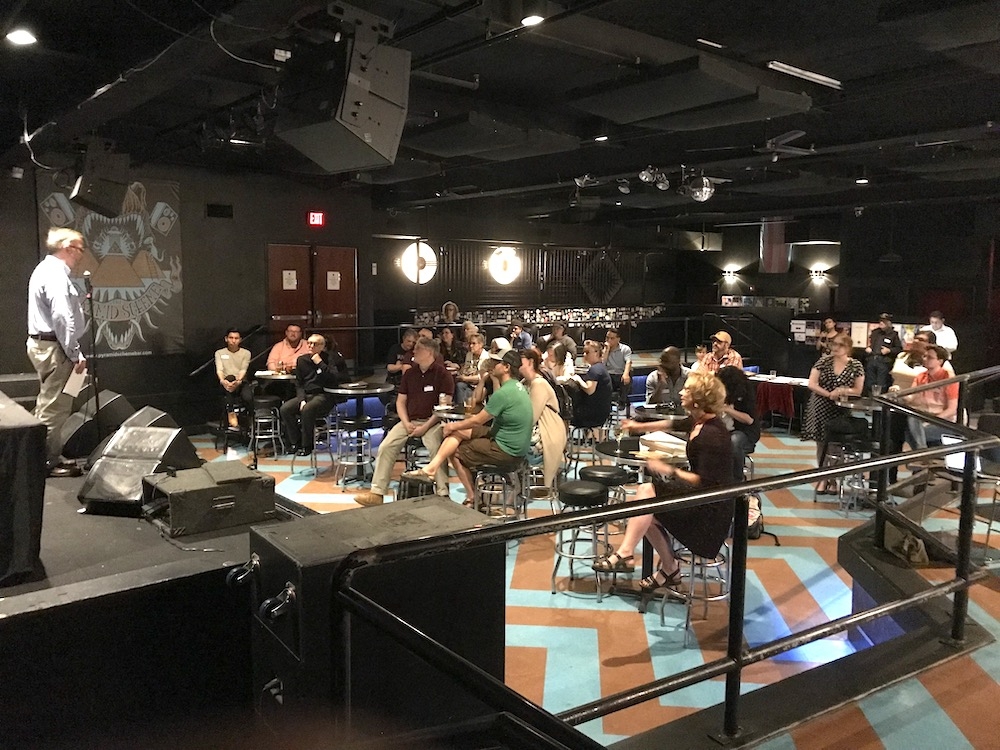History may be repeating itself in Grand Rapids as efforts to expand representation on the City Commission face potential headwinds from local business advocates.
In two weeks, the Grand Rapids Democracy Initiative plans to formally launch a ballot drive to increase the number of city wards from three to eight. The group argues that such large swaths of Grand Rapids — represented by two members each — fail to serve the needs of distinct areas of Michigan’s second-largest city.
Revue first reported on the early stages of the effort in December. The plan seeks to overturn the current system adopted in 1916 that was pushed by local business groups to limit neighborhood voices and govern the city like a board of directors.
While it has not taken a formal position on GRDI’s plan, the Grand Rapids Area Chamber of Commerce is raising “initial concerns” about the potential of more voices at the table stymying the business of the city, specifically about whether the proposal accounts for “big-picture thinking” about Grand Rapids.
“It’s a big change,” said Josh Lunger, senior director of government affairs with the Grand Rapids Chamber. “Larger wards are designed to incentivize bigger-picture thinking. Are we at risk of hyper-local decision making that couldn’t take the best interest of the entire city in play?”
Lunger added that the Chamber wants to further discuss the plan with organizers: “It’s feeling a little rushed. We want to make sure we’re not jumping in to get on the ballot. We want to have a dialogue with folks on it.”
However, advocates say the existing system disenfranchises voters by lumping them in with tens of thousands of residents who may have vastly different interests.
GRDI supporters point out that commissioners each represent nearly 70,000 people. By comparison, state House districts each include about 77,000 residents. An eight-ward structure would have commissioners represent about 25,000 people.
“You basically have the same voice in a state Rep as you do on the City Commission,” said Mike Kolehouse, a Grand Rapids political consultant and GRDI organizer. “That is fundamentally flawed. Those two things should not be the same amount of people.”
Initiative set to begin
At a meeting last week, GRDI organizers laid out their plans to a few dozen supporters, fielding questions about how the process would work and how new wards would be drawn.
The group plans to start the initiative on June 14. In addition to increasing the number of wards from three to eight (and commissioners from six to eight), the ballot proposal also calls for holding special elections for vacant seats rather than having them be appointed by the City Commission.
The Grand Rapids City Commission could approve the ballot language with a minimum of five votes or it could be placed on the ballot by petition signatures. Eventually, city residents would vote on the proposal in either November 2019 or March 2020. If approved, the City Commission would finalize a new eight-ward map.
“I’ve never understood why we have two commissioners per ward — why pay two people to do the exact same thing?” said Tami VandenBerg, a GRDI organizer and owner of The Meanwhile and Pyramid Scheme. “It’s a massive waste of time and resources.”
Supporters also say more localized representation will mean less expensive campaigns, reducing barriers to run.
“We’re really viewing this through a neighborhood lens,” said Steve Faber, GRDI Ward Redistricting Committee member and West Michigan team leader for Byrum & Fisk Advocacy Communications. “How great would it be to have a more singular representative who is more aware of challenges in your community and be able to respond to that? Will these new wards be perfect? No. Will they be better? Yes.”
GRDI organizers also have heard about interest to simply double the number of wards to six while keeping the same number of commissioners. If the City Commission doesn’t support the eight-ward plan, advocates are concerned commissioners could put forward their own six-ward proposal.
GRDI examined six, eight and 12 ward systems. With six wards, the group began to see less neighborhood representation compared to eight. Twelve, however, starts to get less manageable.
“If we go to 12, I can realistically see it would be unruly and difficult to get business done in an expedited fashion,” Kolehouse said at last week’s meeting.
Is it broke?
Another concern GRDI organizers are hearing falls into the “if it’s not broke, why fix it” camp. The question hits on the racial makeup of the current City Commission as well as the economic development that’s taken place in Grand Rapids in recent years.
“What problem are we trying to solve is the key question,” Lunger said. “The city is doing really well by measures of income growth and job growth and people wanting to move here.”
During a Q&A portion of last week’s meeting, attendee Denavvia Mojet took issue with GRDI’s stated goal to increase representation that reflects the city. While no Latinx commissioners have been elected in the city’s history, three black members currently serve on the commission.
“As a huge believer in equity, I’ve heard so much skepticism about how this is being framed,” said Mojet, who serves on the board for Equity PAC. “It’s almost ignoring the fact that we have three black commissioners now, and the two white people pushing this (VandenBerg and Michael Tuffelmire) are two white people who lost to black people (Commissioners Joe Jones and Senita Lenear).”
While GRDI supporters agree the makeup of the Commission has become more diverse in recent years, creating districts that represent 25,000 people versus 70,000 people is inherently equitable.
J.D. Chapman Jr., executive director of Realism is Loyalty and a GRDI Ward Redistricting Committee member, responded to Mojet: “I have to believe smaller wards would bring up residents’ voices and leadership in a lot of ways. The sitting commission looks great, but I’m not going to necessarily say everyone up there represents the people on the ground. A lot of people on the ground don’t even know who the hell is sitting up there.”





